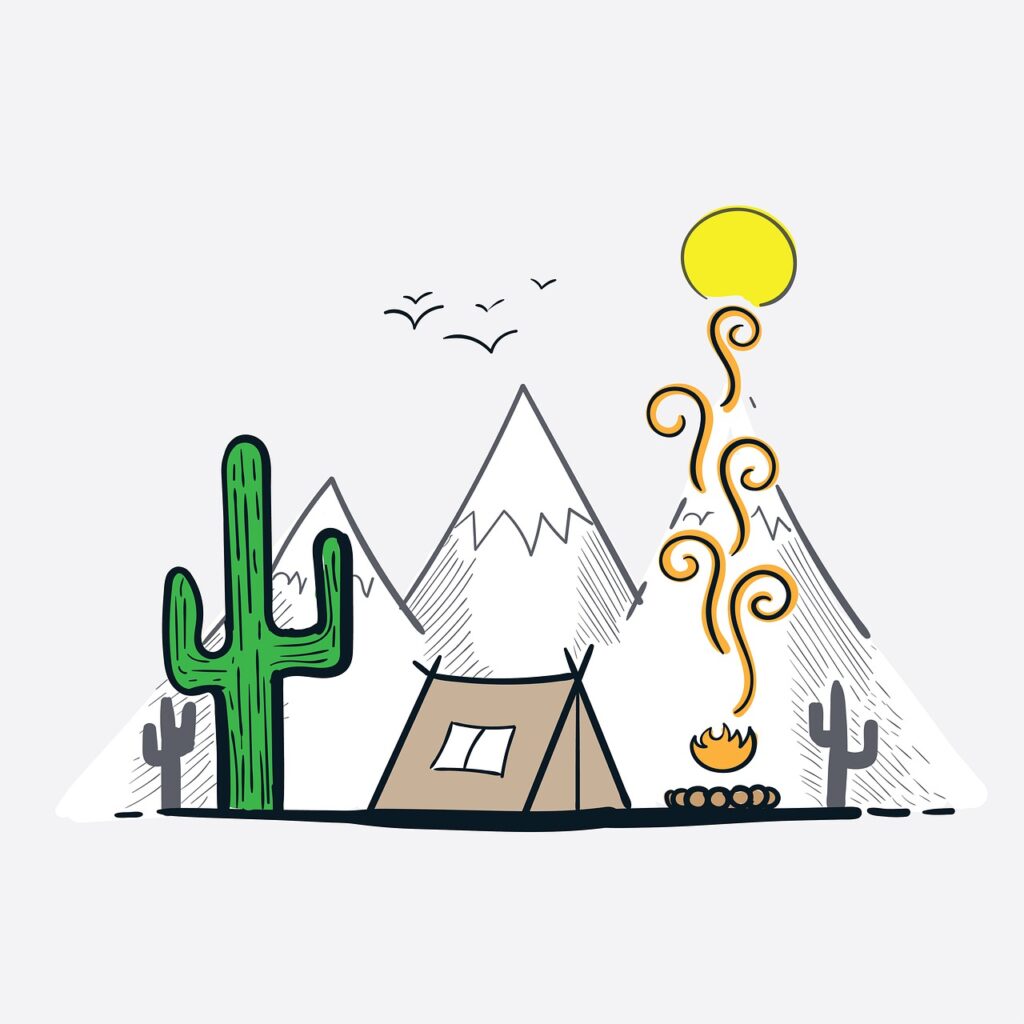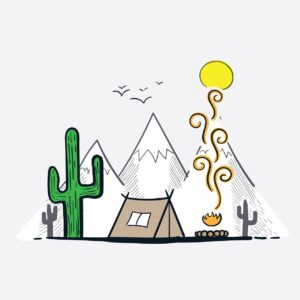Last Updated on April 3, 2024 by ETC Team

Besides location , one of the most essential parts of a camping trip for many people is comfort. How you setup your campsite can often be the determining factor in how comfortable, how much fun, and how safe your camping experience turns out. Luckily with a little planning, it is simple to build the perfect campsite.
Here a 5 step guide to setting up the perfect campsite. Apply these practical tips and you’ll increase the opportunity to have a safe, fun, and comfortable camping experience.
General Tips for Setting up Campsites and Camping Equipment
- When creating a campsite, you want to make sure it’s not only comfortable, but organized as well.
- Having the right gear for the season and location of your camp is crucial.
- Know where you’re camping and what’s available. This includes bathrooms and water sources.
- Electrical outlets are not always necessary, but can impact the equipment at your disposal.
- Bring only what you need and follow the 7 Leave No Trace Principles.
- Keep your equipment stored carefully to avoid tears, holes, mold, or other damage.
5 Key Things to Remember to Build the Perfect Campsite
1. Find the Perfect Site
- Flat land is a must to ensure proper drainage.
- Look for an area that’s free of protruding roots, rocks, and other vegetation.
- Finding flat land with nearby trees can protect your campsite from high winds while providing additional shade.
- Make sure any nearby trees are healthy, rather than dead/dying as they could become hazards in poor or extreme weather conditions.
- The higher ground your campsite has, the better.
2. Keep Trash at a Distance, But Water Sources Close
- Designate a place for trash (recycling and trash depending on campsite rules) to make cleanup easy throughout your outing.
- Trash should be kept at least 20 ft. from your tent and where it can’t be reached by local wildlife.
- Try to set up camp within 200 ft. of a bathroom, but no closer than that.
- Set up camp near a water source.
- If the site has water pumps, make sure it’s only a short walk away.
- When you’re back-country camping, don’t camp too far from any streams, rivers, or other sources of water.
- If obtaining your water from a natural source, pack Chlorine tablets and a water purifier to ensure clean drinking water.
3. Maximize the Usefulness of Your Tent With Proper Placement
- Bring enough tents to accommodate the number of campers.
- Consider using smaller or older tents for additional storage, for unpackaged gear or emergency shelter from inclement weather.
- It’s better to dirty an extra tent than the one you sleep in.
- Waterproof any tents with a silicone sealant or secure a tarp or rain fly over each tent with stakes.
- Place tents on flat land, preferably on high ground to avoid flooding.
4. Keep an Organized and Clean Kitchen Area
- Keep your food in bags and hung out up out of reach of wildlife (particularly bears).
- Food should be kept at least 200 ft. from camp and at least 10-12 ft high.
- Whether you are cooking over a campfire or on a portable grill, cook downwind to avoid enticing animals.
- To ensure your food gets to the campsite safely, use appropriate storage containers and coolers.
- Organizing your camping pantry and kitchen makes finding what you need easy and minimizes the chance of forgetting anything back home.
5. Build a Campfire Like a Pro
- Campfires should be kept at least 15 ft. from surrounding wood and other flammable vegetation.
- When building a fire, keep wind direction and protection in mind.
- Keep a bucket of water and shovel nearby when building a fire.
- The firewood you collect should always be dead and you should never cut down whole branches or trees for firewood.
- Collect tinder, such as small twigs, dry leaves, grass, and needles.
- Sticks smaller than 1 inch in diameter are perfect for kindling. To fuel the fire, use larger pieces of wood.




[…] How To Build The Perfect Campsite […]
[…] this point, your camping adventure is humming along. You’ve found the a great location and built the perfect campsite. You’ve followed the food storage advice and your supplies are safe from wildlife. Now it’s […]